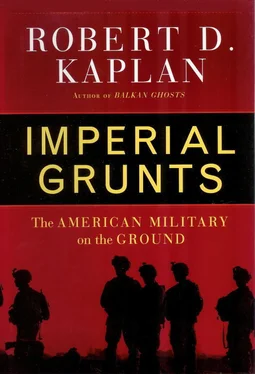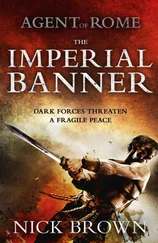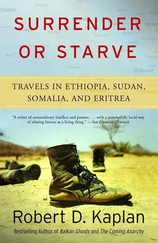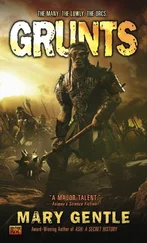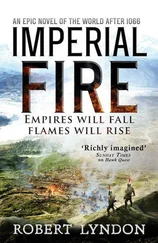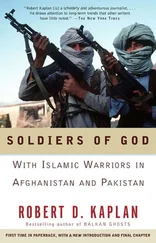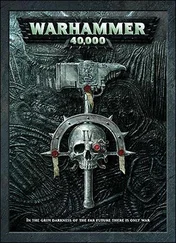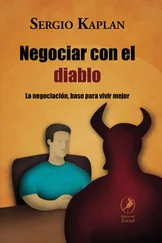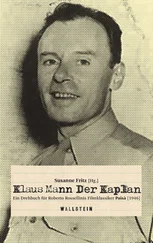4. Gruen, Hellenistic World and the Coming of Rome, pp. 286–87.
5. Francis G. Hutchins, The Illusion of Permanence: British Imperialism in India (Princeton, NJ: Princeton University Press, 1967), p. 196.
6. Bernard De Voto, The Course of Empire (1952; reprint, New York: American Heritage, 1980), p. 228.
7. Ibid., p. 266.
8. Robert M. Utley, Frontier Regulars: The United States Army and the Indian, 1866–1891 (Lincoln: University of Nebraska Press, 1973), p. 172.
9. International Institute for Strategic Studies (London); U.S. News & World Report, Oct. 6, 2003; and Victoria Thompson, research associate, Council on Foreign Relations, in Max Boot, “Bush Funding Request Would Keep Iraq on Recovery Road,” USA Today, Sept. 29, 2003.
10. Byron Farwell, Mr. Kipling’s Army: All the Queen’s Men (New York: Norton, 1981), p. 115; Eliot A. Cohen, “Why the Gap Matters,” The National Interest, Fall 2000.
11. John Keegan, Six Armies in Normandy: From D-Day to the Liberation of Paris (New York: Viking Penguin, 1982), p. 24; Robert D. Kaplan, “Fort Leavenworth and the Eclipse of Nationhood,” The Atlantic Monthly, September 1996, p. 86.
12. John Keegan, Fields of Battle: The Wars for North America (New York: Knopf, 1996), chap. 5, “Forts on the Plains.”
13. Ibid., p. 270.
14. Winston S. Churchill, The Story of the Malakand Field Force: An Episode of Frontier War (1898; reprint, New York: Barnes & Noble, 1993), p. 3.
15. Quoted in Robert M. Utley and Wilcomb E. Washburn, The Indian Wars (New York: American Heritage, 1977), p. 165.
16. Brian W. Dippie, The Frederic Remington Art Museum Collection (Ogdensburg, NY: Frederic Remington Art Museum, 2001), p. 13.
17. Ibid.
18. De Voto, Course of Empire, p. 266.
19. Michael Howard, The Invention of Peace: Reflections on War and International Order (New Haven, CT: Yale University Press, 2000), p. 28.
20. Ibid., pp. 28–29.
21. Eric Hinderaker, Elusive Empires: Constructing Colonialism in the Ohio Valley, 1673–1800 (New York: Cambridge University Press, 1997), p. xi. See also Fred Anderson, Crucible of War: The Seven Years’ War and the Fate of Empire in British North America, 1754–1766 (New York: Knopf, 2000), p. xxi.
22. John Julius Norwich, A History of Venice (New York: Vintage, 1982), pp. 282–83, 508, 594.
23. Robert Work, Center for Strategic and Budgetary Assessments, briefing on America’s overseas bases, Washington, DC, June 19, 2003. This passage is based on his analysis.
24. Ibid.
Chapter 1—CENTCOM: Yemen, Winter 2002
1. Jane Fletcher Geniesse, Passionate Nomad: The Life of Freya Stark (New York: Random House, 1999), pp. 167–69; Malise Ruthven, Freya Stark in Southern Arabia (Reading, UK: Garnet, 1995), p. 19; Freya Stark, The Southern Gates of Arabia: A Journey in the Hadramaut (London: Murray, 1936). See her acknowledgments.
2. Winston S. Churchill, The Story of the Malakand Field Force: An Episode of Frontier War (1898; reprint, New York: Barnes & Noble, 1993), p. 103.
3. See my report “Supremacy by Stealth,” The Atlantic Monthly, July/August 2003.
4. The Economist: World in Figures, 2001.
5. Freya Stark, The Southern Gates of Arabia (New York: Modern Library, 2001), p. 6.
6. Michael Jenner, Yemen Rediscovered (London: Longman, 1983), p. 56.
7. James (now Jan) Morris, Farewell the Trumpets: An Imperial Retreat (New York: Harcourt Brace, 1978), p. 317; Ruthven, Freya Stark in Southern Arabia, p. 9.
8. Ruthven, Freya Stark in Southern Arabia, p. 9.
9. M. C. Ricklefs, A History of Modern Indonesia Since c. 1200 (Stanford, CA: Stanford University Press, 1981), p. 89.
10. Marguerite Yourcenar, Memoirs of Hadrian (1951; reprint, New York: Noonday, 1990), p. 109.
Chapter 2—SOUTHCOM: Colombia, Winter 2003
1. Gen. Shachnow would later publish his autobiography, with Jann Robbins, Hope and Honor (New York: Doherty, 2004).
2. Livy, History of Rome, trans. Evan T. Sage and Alfred C. Schlesinger (Cambridge, MA: Loeb Classical Library, 1938), 42.34.
3. A. J. Simons, The Company They Keep: Life Inside the U.S. Army Special Forces (New York: Free Press, 1997), p. 29.
4. Col. Aaron Bank, From OSS to Green Berets: The Birth of Special Forces (New York: Simon & Schuster, 1986), pp. 25, 74.
5. Dana Priest, The Mission: Waging War and Keeping Peace with America’s Military (New York: Norton, 2003), p. 135.
6. Public Papers of the Presidents of the United States, John F. Kennedy (Washington, DC: U.S. Government Printing Office, 1962), p. 453. Quoted in Richard H. Shultz Jr., The Secret War Against Hanoi: The Untold Story of Spies, Saboteurs, and Covert Warriors in North Vietnam (New York: HarperCollins, 1999), p. 270.
7. Simons, The Company They Keep, p. 215.
8. A. J. Bacevich, James D. Hallums, Richard H. White, and Thomas F. Young, American Military Policy in Small Wars: The Case of El Salvador (Washington, DC: Pergamon-Brassey’s, 1988), p. 16.
9. Stephen Peter Rosen, “An Empire, If You Can Keep It,” National Interest, Spring 2003; Edward Luttwak, The Grand Strategy of the Roman Empire: From the First Century A.D. to the Third (Baltimore: Johns Hopkins University Press, 1976).
10. Barry Asmus, The Best Is Yet to Come (Atlanta: Ameripress, 2001), p. 97.
11. Bacevich et al., American Military Policy in Small Wars, p. 25.
12. Frank Safford and Marco Palacios, Colombia: Fragmented Land, Divided Society (New York: Oxford University Press, 2002), p. 360.
13. Col. Joseph R. Nunez, Fighting the Hobbesian Trinity in Colombia: A New Strategy for Peace (Carlisle, PA: U.S. Army War College, 2001), p. 31.
14. United States Army Infantry School, Fort Benning, Georgia, Ranger Handbook, July 1992, pp. 6-31–6-35.
15. Martin van Creveld, The Art of War: War and Military Thought (London: Cassell, 2000), p. 25.
16. Journal of Special Warfare, October 1993.
17. Joseph Conrad, Nostromo: A Tale of the Seaboard (1904; reprint, Middlesex, UK: Penguin, 1963), p. 195.
18. Safford and Palacios. Colombia, p.7.
19. Ibid., p. 278.
20. Alma Guillermoprieto, Looking for History: Dispatches from Latin America (New York: Pantheon, 2001), p. 52.
21. Mark Bowden, Killing Pablo (New York: Atlantic Monthly Press, 2001), p. 11.
22. Dr. Richard W. Stewart, USASOC historian, “Special Forces in El Salvador, 1980–92: A Synopsis,” John F. Kennedy Special Warfare Center and School, Fort Bragg, North Carolina, p. 5.
23. “El Salvador: Military Assistance Has Helped Counter but Not Overcome the Insurgency; Report to the Honorable Edward M. Kennedy, U.S. Senate” (Washington, DC: General Accounting Office, Apr. 23, 1991), pp. 3, 4, 26, 21.
24. Stephen E. Ambrose, Band of Brothers: E Company, 506th Regiment, 101st Airborne from Normandy to Eagle’s Nest (New York: Simon & Schuster, 1992).
25. Strategic Forecasting LLC, “Colombia: Growing Crisis in Arauca?,” Jan. 30, 2003.
26. “Security in Venezuela: A Lack of Clarity on Terror,” The Economist, Mar. 22, 2003.
27. Linda Robinson, “Terror Close to Home: In Oil-rich Venezuela, a Volatile Leader Befriends Bad Actors from the Mideast, Colombia, and Cuba,” U.S. News & World Report, Oct. 6, 2003.
Читать дальше
